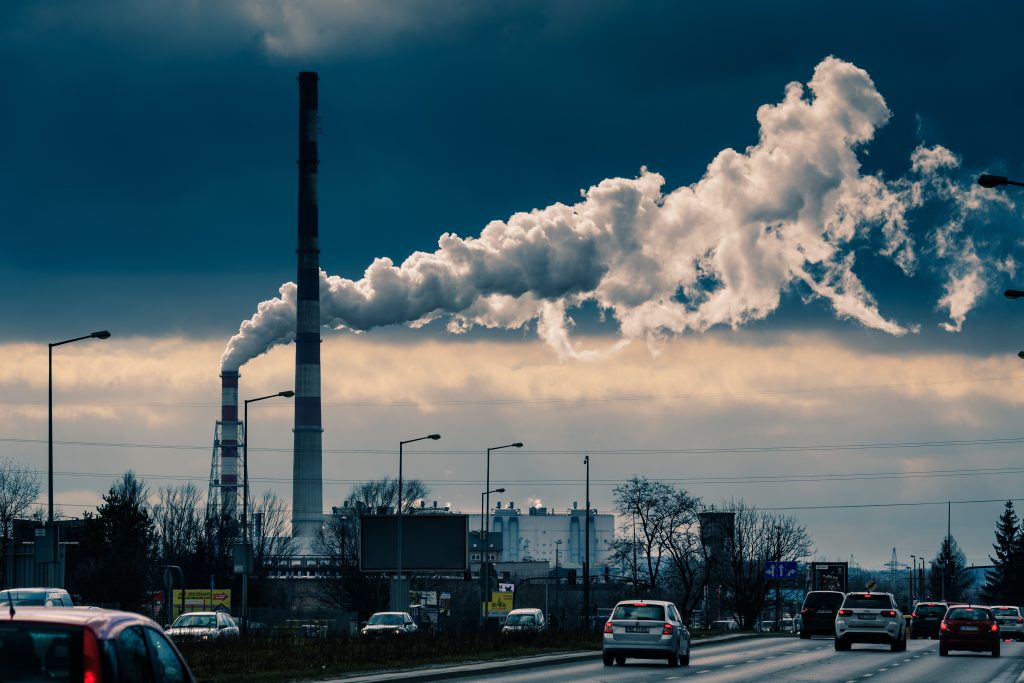Air pollution is one of the greatest inhibitors of employee health and productivity, yet it often gets overlooked. The average office, warehouse, or retail space contains numerous contaminants that make people unwell and unproductive, even if the workers themselves aren’t aware of the effects.
What are the symptoms of air pollution exposure? How do the symptoms affect job performance? Why are modern workplaces so polluted in the first place?
Negative Health Effects of Air Pollution Exposure
The World Health Organization estimates that poor air quality contributes to 4 million premature deaths annually. Hospitals, schools, and workplaces are among the most heavily affected areas. Exposure to air pollution can lead to many short-term and long-term health problems:
- Headache
- Nausea
- Fatigue
- Disorientation
- Dry throat
- Sinus congestion
- Difficulty breathing
- Eye and nose irritation
- Aggravation of chronic respiratory illnesses
- Increased risk of catching an airborne virus
- Increased risk of certain cancers, particularly lung and throat cancer
These symptoms tend to cause a decline in employee performance. No one can work at their full potential when suffering from these uncomfortable issues. But how much of an impact do these health problems have on cognitive functions and productivity?
Air Pollution’s Effects on Worker Productivity

Researchers from the Harvard School of Public Health have compiled the most detailed study on the effects of air pollution on employee productivity to date. The one-year study covered various occupations — including agriculture, engineering, and real estate — across six different countries — the U.S., the U.K., China, India, Mexico, and Thailand.
The results showed a significant association between high particulate matter concentrations, poor ventilation, and impaired cognitive performance. Other factors like temperature and humidity also impacted the productivity of the subjects.
The study’s 302 participants were equipped with an environmental sensor that measured the concentration of particulate matter (PM2.5) and carbon dioxide in their workspaces. The employees took basic tests and surveys whenever the PM2.5 and CO2 levels reached a certain threshold. The tests consisted of basic arithmetic and color identification and had pre-set timers.
Regardless of age, gender, or occupation, the employees correctly answered fewer questions and had slower response times with each interquartile increase of PM2.5 and CO2. For the arithmetic tests, CO2 interestingly had a more negative impact than PM2.5.
Another study took evidence from the Chinese National Panel Survey and found similar trends. The most concerning finding was physical activity decreased and disease prevalence increased in direct correlation with higher PM2.5 concentrations.
Employees who worked outside were more likely to decrease their working hours due to PM2.5 and indoor workers were mainly affected by lower wages. So, along with a decline in cognitive performance, employees also experienced setbacks in hours and compensation due to their employers’ labor-productivity losses.
Why is Workplace Air Pollution So Prevalent?
Both indoor and outdoor work environments are filled with a lot of air pollutants — far too many to account for in one article. The most common sources of particulate matter are dust, smoke, mold, and volatile organic compounds (VOCs).
VOCs are in numerous items, including paint, furniture, and cleaning products. Other factors can also add more air pollution to a workplace:
- Outdoor pollutants: Any worker who lives in a populous town or city is surrounded by air pollutants whenever they step outside. Construction workers and other outdoor workers are affected the most, but the pollution also trickles indoors and contaminates office buildings, stores, warehouses, and other workplaces.
- Insufficient ventilation: Many commercial buildings have an inadequate number of windows to allow for proper ventilation. Outdated or poorly maintained HVAC systems are also one of the main reasons for poor workplace ventilation.
- Low physical activity: Sedentary office jobs with minimal physical activity tend to have poor air quality because there isn’t much circulation. The same contaminated air festers inside and doesn’t get filtered out.
Air Purifiers

Each room needs its own air purifier. Portable purifiers are perfect for enclosed workplaces such as offices and warehouses. They can remove many indoor air pollutants and foul odors from the area. HEPA filters are the best options, which are designed to collect 99.5% of particulate matter, including dust, dirt, pollen, viruses, and bacteria. Venta Air Purifiers, however, will filter pollutants down to 0.07 microns with at least 99.95% efficiency, helping you breathe easily in the workplace.
Businesses should take a natural approach and bring in more plants as well. Plants are natural air purifiers that scrub the air of contaminants and make it fresher. Simply scattering some plants around the workplace can drastically reduce CO2 levels, significantly impacting cognitive function. Using more natural building materials like stone and hardwood over artificial materials can also eliminate VOCs and make the air safer to breathe.
Air Quality Monitors
There should also be different air quality monitors throughout the building that perform specific tasks. Thermostats, CO2 monitors, carbon monoxide detectors, and particulate matter monitors are absolutely essential. These four monitors cover all the previously mentioned air pollutants that pose the greatest health risks to employees.
Employers Must Start Prioritizing Air Quality
Employers have many responsibilities — the most important is supporting employees. Companies across all industries need to start taking air quality more seriously. A handful of upgrades can make a world of difference and will pay off in the long run with better employee health and performance.

